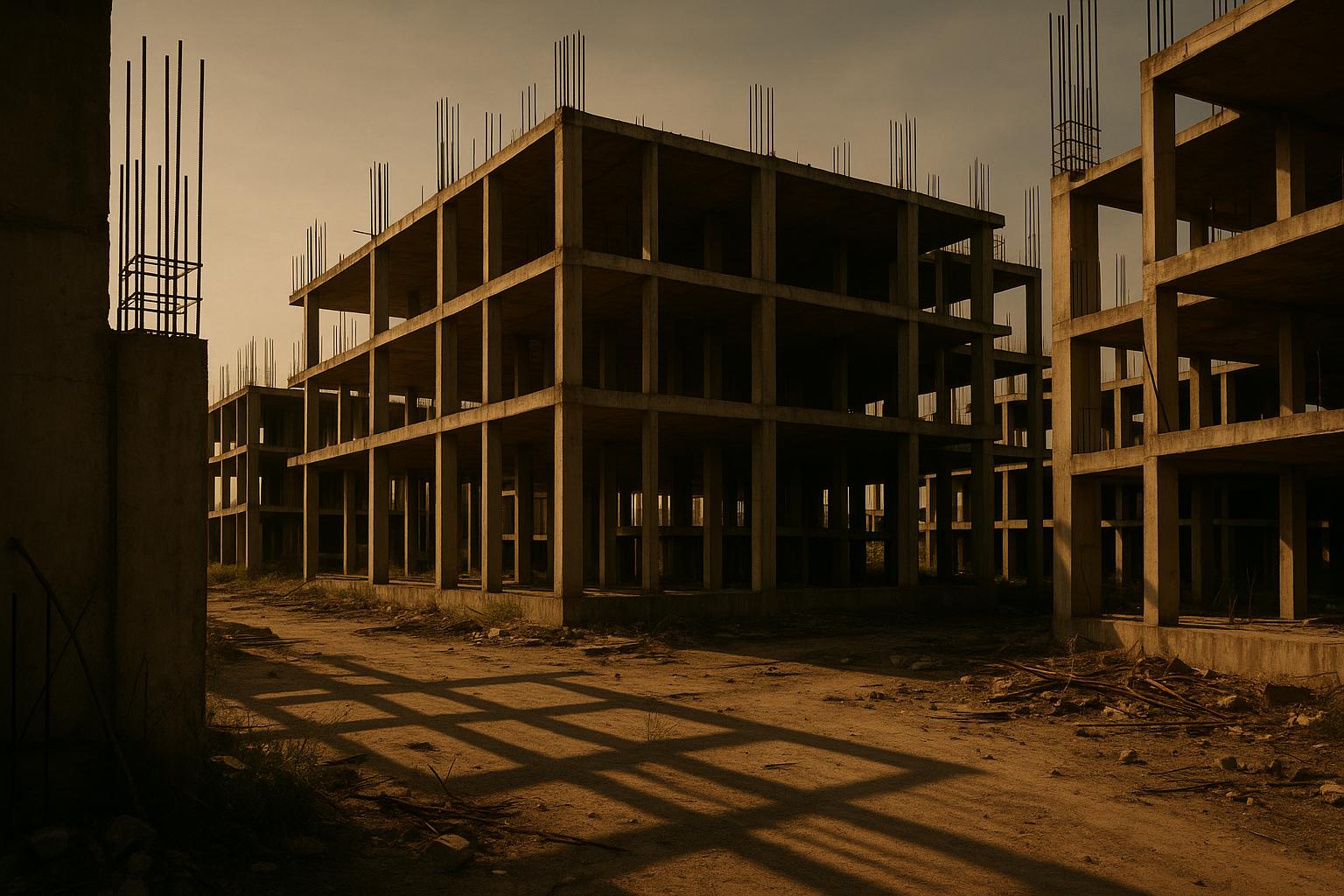Housing Secretary Steve Reed remains publicly optimistic about the UK Government’s promise to deliver 1.5 million new homes by 2029, regularly sporting his trademark red baseball cap emblazoned with the slogan "Build, Baby, Build." However, this ambitious target, amounting to an annual construction rate of 300,000 properties, faces growing skepticism across various sectors, especially as housebuilder shares have taken a hit amid waning buyer demand and rising costs for labour and materials.
The Labour Party, which has placed housing at the heart of its appeal to younger voters, is under pressure to act decisively. Chancellor Rachel Reeves, often seen in a hard hat to project a hands-on commitment to construction, is expected to use the forthcoming Budget to stimulate development and enhance homeownership affordability. Market watchers anticipate that Reeves may reintroduce a version of the Help to Buy scheme, a controversial but effective government aid package that was withdrawn in 2023 but previously boosted new-build home purchases by approximately 40,000 units annually.
Housing insiders note that Reeves’ recent speeches have hinted at such policy moves, although near-certain tax rises may complicate the market sentiment. Despite this, a revived government-backed incentive is widely seen as a crucial lever to boost demand and restore confidence among housebuilders. Industry broker Berenberg forecasts a gradual recovery in housing starts, though still below targets, with around 190,000 new homes expected in 2029 compared to the government’s 300,000 per annum goal. Estate agency Savills estimates that without intervention, only about 840,000 homes could be built over the period, a significant 42% shortfall.
The government is also banking on a sweeping overhaul of the planning system aimed at easing local opposition and speeding up approvals. The Office for Budget Responsibility (OBR) forecasts these reforms could push housebuilding to its highest level in over 40 years by 2029/30, potentially adding 0.2% to GDP, equating to nearly £7 billion annually in today’s terms. However, experts caution that such benefits will not materialise immediately, as new policies typically take around three years before impacting actual construction output.
Labour’s broader strategy includes a £2 billion investment to deliver up to 18,000 affordable homes by 2029, with construction starting in 2027. This intensifies the focus on not just quantity but also affordability, a pressing issue for first-time buyers. Housing Minister Angela Rayner emphasises this initiative’s role in providing secure homes for working families.
Another critical hurdle remains the severe skills shortage in the construction sector, exacerbated by Brexit and the COVID-19 pandemic. The government has committed £600 million to address this issue, funding upskilling programmes and apprenticeships to train up to 60,000 new construction workers by 2029. This investment targets trades such as bricklaying and engineering, which are vital for sustaining increased housebuilding rates.
Economically, despite these efforts, the UK is expected to fall short of the 1.5 million home target, with market analysts projecting around one million completions by 2029. The housing market faces further headwinds such as rising urban rents, with expected increases in London of 3.7%, which hamper potential buyers' ability to accumulate deposits. However, anticipated interest rate reductions starting 2025 may alleviate mortgage affordability pressures, potentially reviving demand.
The share prices of major housebuilders mirror this uncertain environment. Since last summer’s general election, the FTSE 350 Household Goods and Construction index has dropped by 32%, with leading companies like Barratt Redrow, Bellway, Taylor Wimpey, and Vistry trading 20-30% below their book value, the net worth of their land holdings. For instance, Barratt Redrow’s shares have fallen 20% over six months amid slower bookings tied to Budget-related tax fears. Both Barratt Redrow and Persimmon have attempted to bolster deposits with loan products, while Bellway is pushing for incentives aimed at first-time buyers who lack familial financial support.
While reviving Help to Buy carries political risks due to past controversies, such as massive bonus payouts to housebuilder executives, it could be a vital tool to maintain momentum and confidence. Property analysts like Oli Creasey from Quilter Cheviot suggest that failure to deliver on the homes target would be politically costly, implying a government incentive package may return.
From an investment perspective, some housebuilders are still considered attractive, offering dividend yields around 5% and potential capital appreciation. Barratt Redrow, Bellway, and Persimmon receive “buy” ratings from analysts, with price targets notably above current levels. Taylor Wimpey, despite a decade-long share price decline, is expected to outperform the sector with an attractive near-9% dividend yield. Conversely, companies like Vistry and Crest Nicholson face challenges from recent profit warnings and ongoing remediation costs, warranting more cautious “hold” ratings.
Ultimately, the conviction underlying the long-term investment case in this sector is the enduring British aspiration for homeownership. While political figures may symbolically don hard hats, the expertise and execution lie with the listed housebuilders navigating a complex blend of regulatory, economic, and market dynamics. Investors with a long-term horizon may find value in these shares amidst current uncertainties, especially if policy support emerges to reinvigorate demand and capacity.
📌 Reference Map:
- [1] (Daily Mail) - Paragraphs 1, 3, 4, 6, 7, 9, 10, 11, 12, 13
- [2] (UK Government - OBR) - Paragraph 5
- [3] (Reuters) - Paragraph 6
- [4] (Reuters) - Paragraph 7
- [5] (Reuters) - Paragraph 8
- [6] (UK Government) - Paragraph 6
- [7] (UK Government) - Paragraph 5
Source: Noah Wire Services
